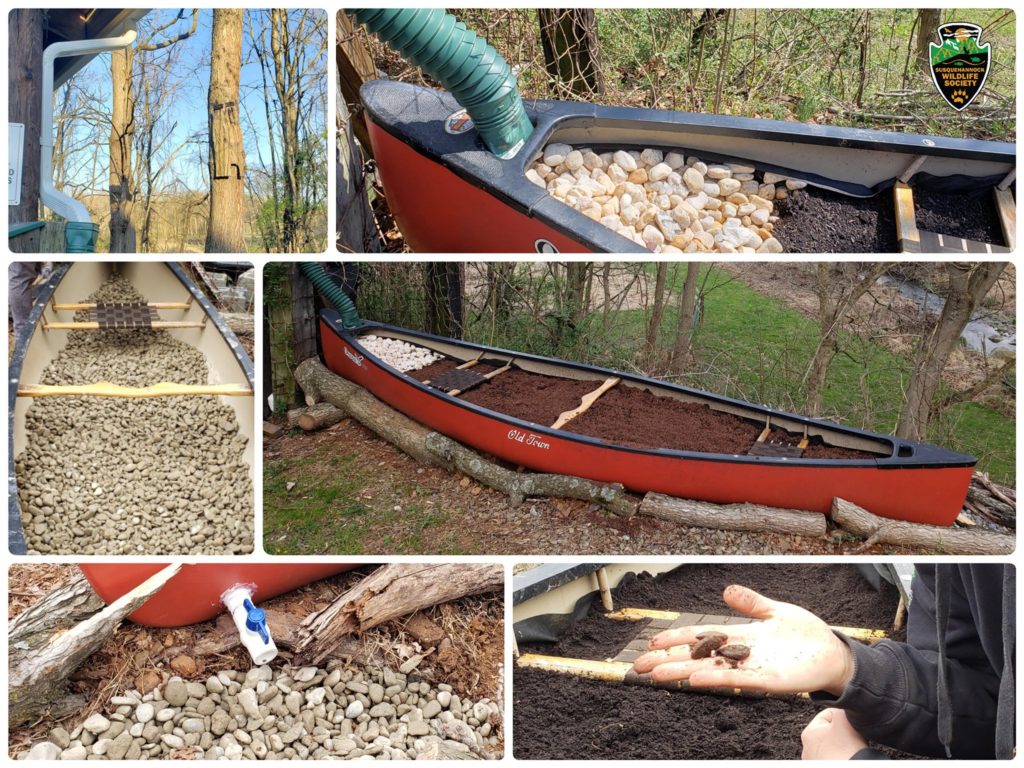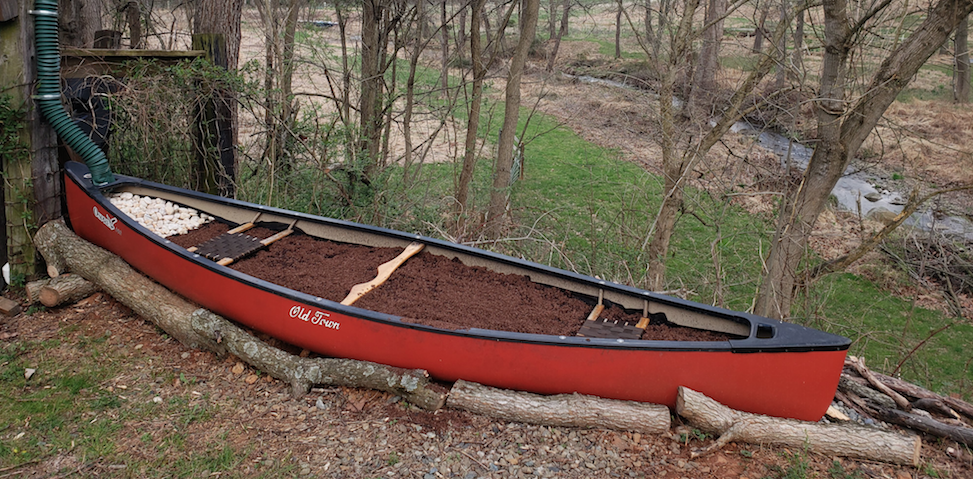
During these times when a lot of us are doing some spring cleaning it can be a unique opportunity to recycle while helping to reduce your impact on the watershed. We are experimenting with this design and would love to see what you come up with! We had this awesome canoe donated that was damaged and unable to be sufficiently repaired. Instead of throwing it away we decided to create a rain garden planter that not only would help filter rainwater coming off of our barn roof but added to the aesthetic of the Wildlife Center (we love going out paddling!).
We did this by creating some elevation so water would flow to one end where we added a valve that we would control whether we wanted water to retain longer (for wetland plants) or exit out quicker. Where the valve is located we also created a pit with stone so some water can seep into the ground before heading downhill to our creek. We added stone and weed cloth across the bottom of the boat so some water could leave without soil clogging the valve. Then we added a layer compost soil and fine mulch above it. The goal is to slow, cool down and filter as much of the quickly flowing water from our metal roof before it reaches our stream below and eventually the Susquehanna and Chesapeake Bay.
As an initial planting we decided to try out some pawpaw seeds that we had refrigerated over the winter (they need to be cold stratified) and then move them into more appropriate hillside slope conditions once they get head started in our planter. We may try to start out other native plants such as white turtlehead that we can later move to our Baltimore checkerspot restoration area. It may not be a perfect design but we are working to do our part to not only reduce our impact by recycling but to be conscious of our impervious surfaces and the watershed we want to help protect. There is so much sensitive wildlife downstream of each of our homes that is depending on us all to do so. We hope we may have inspired you to rethink some of that backyard junk before taking it to the landfill and ways you might slow the flow of rain water around your home.


